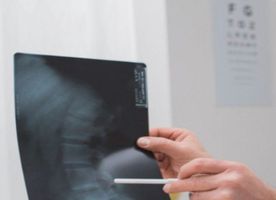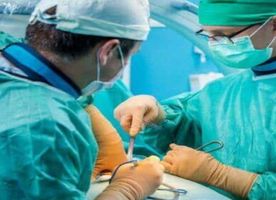Spinal Surgery in South Korea
Search and Compare the Best Clinics and Doctors at the Lowest Prices for Spinal Surgery in South Korea
Gachon University Gil Medical Center





Spinal Surgery at Gachon University Gil Medical Center in Incheon, South Korea
Incheon St. Mary's Hospital





Spinal Surgery at Incheon St. Mary's Hospital in Incheon, South Korea
Samsung Medical Center





Spinal Surgery at Samsung Medical Center in Seoul, South Korea
Dongguk University Ilsan Medical Center





Spinal Surgery at Dongguk University Ilsan Medical Center in Ilsan, South Korea
CNU Hwasun Hospital



Spinal Surgery at CNU Hwasun Hospital in Bundang, South Korea
Chung-Ang University Hospital





Spinal Surgery at Chung-Ang University Hospital in Seoul, South Korea
Sun Medical Center





Spinal Surgery at Sun Medical Center in Daejeon, South Korea
Hanyang University Medical Center





Spinal Surgery at Hanyang University Medical Center in Seoul, South Korea
Cheil General Hospital & Women's Healthcare Center





Spinal Surgery at Cheil General Hospital & Women's Healthcare Center in Seoul, South Korea
Kyung Hee University Hospital





Spinal Surgery at Kyung Hee University Hospital in Seoul, South Korea
Seoul National University Hospital





Spinal Surgery at Seoul National University Hospital in Seoul, South Korea
Severance Hospital





Spinal Surgery at Severance Hospital in Seoul, South Korea
Nanoori hospital





Spinal Surgery at Nanoori hospital in Seoul, South Korea
KUIMS





Spinal Surgery at KUIMS in Seoul, South Korea
Wooridul Spine Hospital





Spinal Surgery at Wooridul Spine Hospital in Seoul, South Korea
Chaum Medical Center





Spinal Surgery at Chaum Medical Center in Seoul, South Korea
Asan Medical Center





Spinal Surgery at Asan Medical Center in Seoul, South Korea
Our partner clinics in South Korea are accredited by the following associations



































































































































No Time?
Tell us what you're looking for and we'll reach out to the top clinics all at once
WHY US?



































































































































No Time?
Tell us what you're looking for and we'll reach out to the top clinics all at once





Spinal surgery is any surgical procedure performed to correct possible structural abnormalities. Surgeons can move, fix, decompress, and, if necessary, replace vertebral structures through spinal surgery. This is only considered when conservative, non-surgical treatments have not worked and the pain remains persistent, preventing patients from living a normal life and reducing their quality of life. Some common conditions that may require spinal surgery are spinal deformation, compression of the spinal cord, herniated discs, and tumors of the spinal cord, cauda equine syndrome, vertebral fractures, and degenerative disc disease.
There are numerous types of spinal surgery. The type of surgery you will receive depends on your disease or injury, the location, the level of damage, as well as your own characteristics. Some of the most common types of spinal surgery are as follows:
- Spinal fusion – during spinal fusion, your surgeon will join spinal bones (vertebrae) together to prevent pain caused by their movement against each other.
- Discectomy – your surgeon removes part of or the entire disc that slips out of place presses on a spinal nerve, and cause back pain.
- Laminectomy – most commonly used for lumbar spinal stenosis, this surgery involves the removal of parts of the bone, ligaments, or bone spurs in the back to relieve pressure on spinal nerves and ease the pain.
- Disc replacement – your surgeon removes the damaged spinal disc and replaces it with an artificial one.
- Foraminotomy – bones at the sides of your vertebrae is cut away to widen the space where nerves exit the spine. Like laminectomy, this is done to relieve pressure on a compressed nerve and ease pain.
- Interlaminar implant –a U-shaped device is implanted between two vertebrae in your lower back to ease pressure on your spinal nerves by keeping the space between the vertebrae open. This is a minimally invasive alternative to laminectomy.
How Long Should I Stay in South Korea?
You may need to stay in South Korea for at least 10 to 14 days following your surgery to allow for your body to recover and attend follow-up checkups, if necessary. During the follow-up checkup, your overall condition will be monitored and the surgical stitches will be removed.
What's the Expected Recovery Time?
Recovery depends on the specific disease/injury you have, the type of spinal surgery you underwent, and your overall health. If you are healthy and your job is not physically demanding, you may be allowed to go back to work within 4 to 6 weeks following surgery. However, it takes at least 3 to 4 months for the bones to heal, and healing can continue for at least a year. During this period, there might be some restrictions on your activity. Remember, the recovery period is just as important as the surgery.
What Aftercare is Required?
Following all the instructions and recommendations provided by your surgical team is important to avoid complications and speed up your recovery process. You may need physical therapy following your surgery, which is aimed to restore the strength of your spine and help you return to everyday activities gradually. In certain cases, you may also need regular checkups. You can choose to undergo physical therapy and/or regular checkup at home in your local hospital if you prefer.
What's the Success Rate?
The success rate of spinal surgery, in terms of pain relief, is around 70% to 90%, depending on the type of surgery and the condition treated. The success and safety rate of spinal surgery is higher than it used to be and will continue to increase, thanks to the continuous advancement of spinal surgery. For example, today, many types of spinal surgery can be done minimally invasively. This means that no long incisions are needed, leading to shorter operative and recovery times. Still, there are risks you need to be aware of, such as bleeding, infection, blood clots, and persistent pain.
Are there Alternatives?
Spinal surgery is only considered when other treatments have not worked. If you do not want surgery, make sure to discuss this with your doctor for the best possible alternative. When surgery is not needed, you may take a pain reliever or even try acupuncture to help relieve the pain.
This information has been accurately sourced and verified by a medical professional for its accuracy, however, we strongly recommend you to consult with your doctor before pursuing medical procedures overseas.












